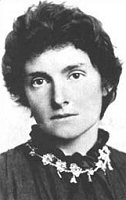 When I was casting round
for a literary detective for a cosy mystery novel, I came up with the idea of
using Edith Nesbit, the author of some of my most favourite children’s novels. Perfect, I thought –– until I did a little
biographical investigation. I found to
my shock that the author who merged magic, fun and happy families, and penned
such ‘immortal’ lines as “Get off the line, Bobby!” and “Daddy! My Daddy!”* was
in fact a hard-left, swinging, smoking modern lady of the twentieth
century. Definitely NOT cosy material.
When I was casting round
for a literary detective for a cosy mystery novel, I came up with the idea of
using Edith Nesbit, the author of some of my most favourite children’s novels. Perfect, I thought –– until I did a little
biographical investigation. I found to
my shock that the author who merged magic, fun and happy families, and penned
such ‘immortal’ lines as “Get off the line, Bobby!” and “Daddy! My Daddy!”* was
in fact a hard-left, swinging, smoking modern lady of the twentieth
century. Definitely NOT cosy material.
To British readers and
authors Nesbit is a friend and inspiration.
I’m filing her under ‘neglected classics’ because I’ve been surprised at
– or perhaps educated by - how many of my American friends haven’t read her. It’s made feel like she’s a well-kept British
secret I have to divulge!
I’m not the only one to be
surprised at the dichotomy between Edith’s novels and her life – the
disagreements over detail and perspective on her life in various biographies
speak, I think, to her fans’ struggle over Edith as narrator/writer and person. So, some facts (to the best of my
knowledge!): Edith’s father died when
she was only four, and her mother, left to deal with supporting her family and
a sickly daughter, moved the family back and forth from England to the
Continent, and sent Edith to various schools.
This instability may account for the rosy pictures of sibling life she
so often portrayed in her novels – and for the often absent parent.
As a young woman, she
became involved with the handsome, philandering Hubert Bland, marrying him when
she was 7 months pregnant. The couple’s
socialist convictions, along with Edith’s intelligence and sociability, brought
them into contact with influential people such as George Bernard Shaw and
Sidney and Beatrice Webb. They were
founder members of the Fabian society, a left-wing think tank – in fact, they
named their second son Fabian.
Edith showed a proclivity
for courting attention. Unconventional,
she took up smoking, cut her hair short and supposedly (some disagree about
this) had an affair with Shaw. She
apparently more than tolerated her husband’s lover, Alice, living with them, and
even raised the resulting illegitimate children as her own.
 Edith had always loved
writing; she published her first poems at fifteen and continued to write poetry
and novels to support her family. She
courted three audiences – the conventional, moralizing crowd, those who loved
popular, sensational works, and the new left intelligentsia. But she found her voice in writing for
children. In 1899, the publication of
the children’s book The Treasure Seekers
at last brought fame and enough steady work to move to a grander house in the
country. House parties included the
likes of H.G. Wells, Laurence Houseman and G.K. Chesterton.
Edith had always loved
writing; she published her first poems at fifteen and continued to write poetry
and novels to support her family. She
courted three audiences – the conventional, moralizing crowd, those who loved
popular, sensational works, and the new left intelligentsia. But she found her voice in writing for
children. In 1899, the publication of
the children’s book The Treasure Seekers
at last brought fame and enough steady work to move to a grander house in the
country. House parties included the
likes of H.G. Wells, Laurence Houseman and G.K. Chesterton.
Her husband’s sudden death
in 1914, along with the First World War, brought a change in Edith’s
circumstances (Fabian had also died shortly before when a routine operation to
remove his tonsils went wrong). Although
she married again, the couple had to move to a more modest home in Dymchurch, characterized
as “Lymchurch” in her work. When she
died in 1924, she requested that no tombstone be laid, and a simple, wooden
panel marks her grave.
Nesbit was one of the
first authors to develop fantasy novels for children, her strength being in
fantasies that intersect, often to great comic effect, with everyday life. She also very clearly writes from a child’s
perspective. For the researcher of the Edwardian
period, her novels are a proverbial goldmine, full of the little details of
everyday life and current slang.
Since I ran out of space
here, I’ll talk about her novels in a follow-up post, but if you’re already
interested, the E. Nesbit Society has an overview of her work, and Julia Briggs’s
1987 biography, A Woman of Passion is
back in print.
Cool info. I'll have to check out that biography.
ReplyDelete